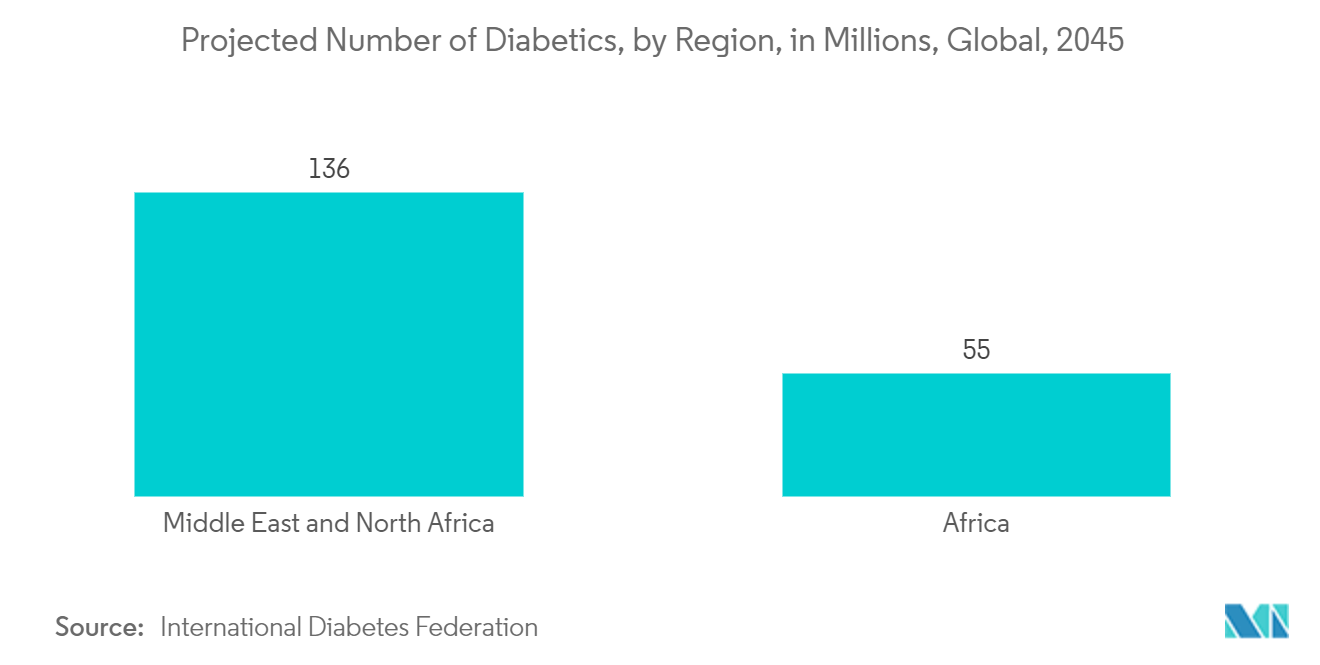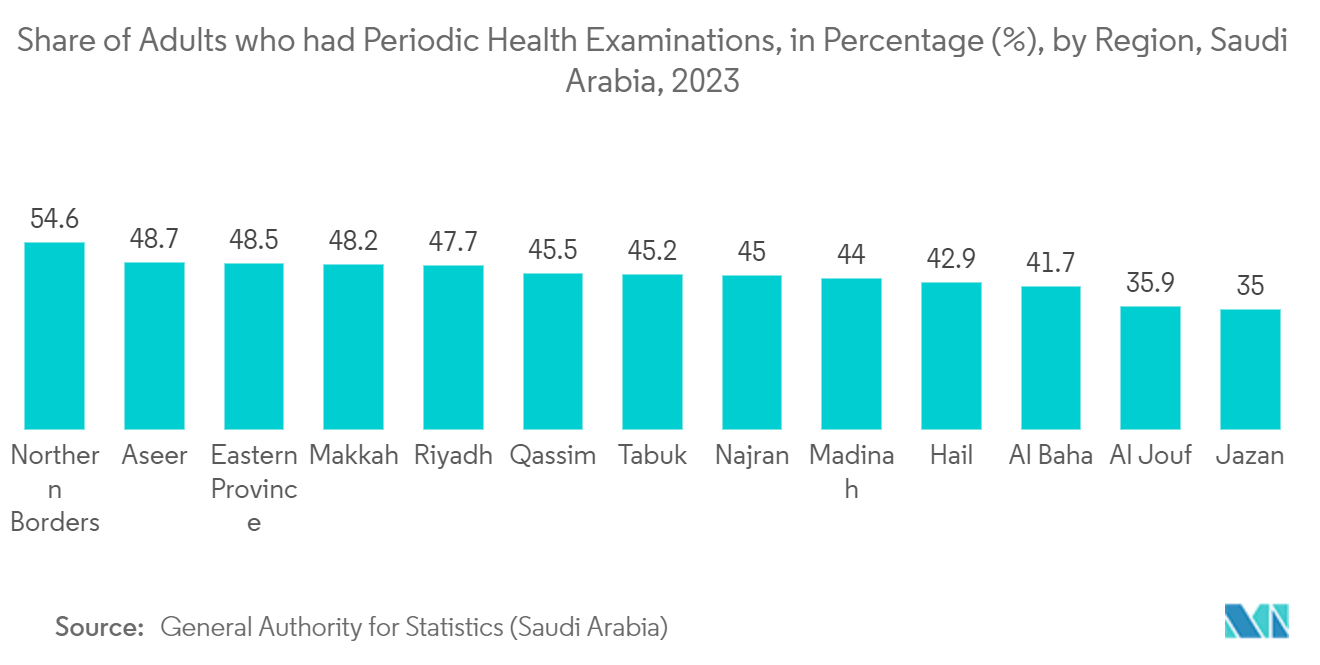Market Trends of MEA Biomedical Sensors Industry
Growing Demand for Fitness Devices to Drive the Market
- The incidence and prevalence of lifestyle-related illnesses, such as diabetes and hypertension, are anticipated to rise over the forecast period due to the sedentary lifestyle of people. Several physiological factors, such as blood sugar levels and blood pressure, should be continuously monitored in some of these disorders. This enables the integration of healthcare data with portable medical equipment, which may then be provided to clinicians for real-time data access and error reduction.
- Furthermore, the rising death rate from noncommunicable illnesses is a significant source of concern, necessitating a greater focus on tailored monitoring and care. This is expected to boost demand for wearable medical devices and the research industry in the long run. According to WHO, the four main NCDs are causative of the demise of around 4,800 people in the UAE annually, and the chance of dying before age 70 from NCDs is nearly one in five.
- Wearable biomedical sensors are gaining interest nowadays, and it is a remarkable development in the sector of wearable health technology. These sensors are digital devices that can be worn on the body and allow blood glucose levels, blood pressure, heartbeat rate, and other biometric data to be calculated continuously and constantly.
- Furthermore, in September 2023, Emirates Global Aluminum announced that it had expanded the use of Kenzen, a wearable technology platform, to 350 employee volunteers to "Beat the Heat" in the summer. Kenzen's wearable technology has the potential to protect outdoor workers in the UAE by continuously reporting body temperature, heart rate, activity, and other body indicators, allowing both the user and EGA's safety team to avoid heat stress in the body by recognizing signs.
- In addition, according to the International Diabetes Federation, the number of people with diabetes is increasing in the Middle East and Africa, and by 2045, MENA is expected to have 136 people with diabetes.
- The rising frequency of chronic diseases, as well as rising death rates, is a significant source of concern for both individuals and government agencies. As a result, healthcare practitioners can provide tailored care that includes ongoing and remote patient monitoring. These can also be worn for up to 24 hours without interfering with daily activities. As a result of the numerous benefits it provides, the demand for wearable medical devices, as well as the studied market, is expected to increase over the projection period.
- The industry is expected to expand with the rise in popularity of the Internet of Things. The advent of new technologies and the introduction of innovative products in favor of customers at reasonable rates are also driving demand for fitness trackers in the Middle East and Africa. The growing trend of recording and monitoring the number of steps walked, heart rate, sleep duration, and calories burned when exercising or participating in sports activities is expected to enhance the demand for fitness trackers in the Middle East and Africa.

Saudi Arabia Expected to Witness Significant Growth
- The increasing prevalence of lifestyle disease and growing focus on primary healthcare, preventative care, and specialized clinics would fuel the demand for biomedical pressure sensors in Saudi Arabia. The country is witnessing increased development of private hospitals, clinics, and digital health services, further expanding the deployment of monitoring and diagnostics devices.
- Saudi Arabia has experienced significant growth in its healthcare sector due to large investments in recent years. Increased government spending and private sector involvement have improved the quality of healthcare infrastructure to meet surging demand.
- Rising demand for remote patient monitoring solutions due to the aging population and long-lasting chronic diseases are the major factors propelling the market growth. The demand for diagnostics and monitoring devices has been growing, especially in rehabilitation clinics, mental healthcare facilities, and dialysis centers, offering new opportunities to the vendors in the market.
- According to the General Authority for Statistics (Saudi Arabia), in 2023, 55% of adults in Northern Borders in Saudi Arabia had periodic health examinations. Between 40 and 49% of adults in 10 of the 13 regions had regular health check-ups. Jazan was the region with the least share of periodic health examinations among adults, at 35%.
- Saudi Arabia's Vision 2030 defines healthcare as one of the critical pillars of development and sets goals and strategies to improve healthcare access and quality. Building advanced infrastructure is critical, and the government has asked the private sector to invest approximately USD 66 billion to make it happen. This makes Saudi Arabia the most promising healthcare market in the Middle East.
- According to the National Institute of Health (NIH), in Saudi Arabia, non-communicable diseases account for 73% of all deaths. Cardiovascular diseases are the leading cause of NCD deaths, accounting for 37% of total deaths, followed by cancer at 10%, then diabetes at 3%, respiratory diseases at 3%, and other NCDs at 20%. The country aims to continue to increase its spending to prevent and treat lifestyle disorders and diabetes. In addition, the Saudi medical equipment market has an estimated value of USD 2 billion and is growing annually at approximately 10%.


